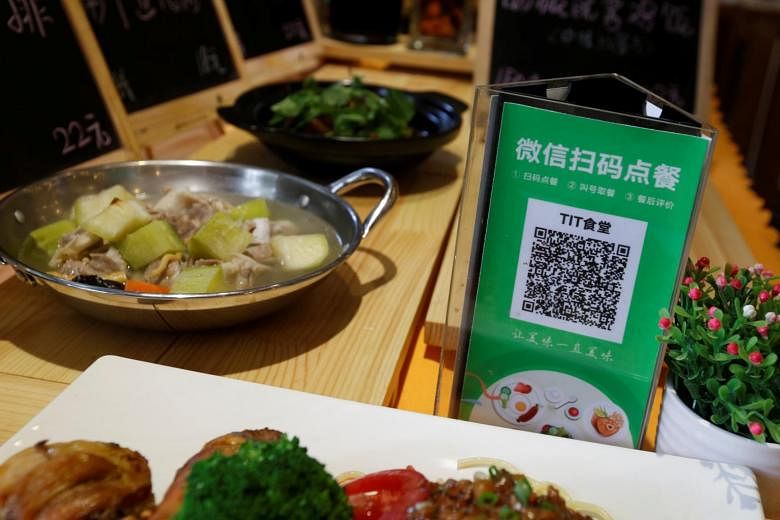HONG KONG • China is gradually shedding its reputation as the world's technology copycat. It still spawns lookalikes, whether they be GoPro-style action cameras or Didi Chuxing, a ride-hailing app that looked awfully like Uber until it added Chinese characteristics and vanquished its former rival. But some Chinese companies are also leading the way in new services and business models.
There are several reasons. Competing in a protected space - the likes of Facebook, Twitter, and Google's search engine are blocked in China - mitigates risk and encourages experimentation. So too does a big market. But the move towards pioneering also reflects a generational change, says Mr Derrick Xiong, chief marketing officer of drone maker Ehang.
The new generation of entrepreneurs, "the post-90s, were born to be global", he says. "They have never experienced hard times in China so they have a completely different mindset", more akin to that of their peers in the US or Europe than their parents.
Here are some sectors in which made-in-China innovations are blazing a trail.
BIKE-SHARING
China has embraced bike-sharing, pioneering a dockless model that offers cyclists advantages over comparable services in London and New York: Bikes are unlocked using mobile apps, and can be picked up and left anywhere. Many are even GPS-tracked. Mobike (orange) and Ofo (yellow) have led the pack, followed by Xiaoming's blue bikes. One financier, only half-joking, opines that the only barrier to entry will be when they run out of colours.
A subsequent crackdown by regulators, irked at the piles of dumped bikes littering cities, portends potholes on the road. But that hasn't deterred those like LimeBike from rolling out a similar service in California, North Carolina and Florida in the US, following the dockless, QR code-based Chinese model.
QR CODES
For much of China, the QR code - a type of barcode - is the key that unlocks the digital world. A swipe of the matrix with a mobile device lets a user hire a bike, pay for goods and grab a new contact's details: Why swap business cards when you can just hover your phone over that of your new acquaintance?
Companies in the United States, where the QR code was dismissed in 2013, now seem to be changing their view. Snapchat picked up the idea in 2015, allowing users to follow one another as easily as their WeChat peers in China by scanning each other's QR codes, and proceeded to facilitate their use to access websites. Facebook this year is piloting "rewards" QR codes to secure discounts in certain shops, while Spotify has adopted the technology to allow users to share music.
SOCIAL MEDIA
WhatsApp's launch last month of business accounts showed the US messaging app taking another step down the path forged by WeChat.
WeChat, Tencent's chat and social media app, has long courted the business world. It is how government, celebrities and businesses from Burberry to Mondelez connect to customers in the Chinese social media space - spicing up their chat with cool fashion show snaps, special offers and sales promotions - and post information or news. WeChat has over 20 million "official accounts", according to industry estimates, though not all are verified.
WhatsApp is now jumping on that bandwagon, following in the footsteps of WeChat. In an effort to help businesses keep in touch with their customers and to make money, the Facebook-owned app has begun offering "verified profile" accounts, so customers know they are contacting the right shop or service.
RETAIL
The world drew a collective gasp when Amazon splashed out US$13.7 billion (S$18.5 billion) in June to buy Whole Foods, bringing its cut-throat online competition to the bricks-and-mortar world of artisanal breads and organic kale.
But Chinese rivals were ahead of the game. E-commerce giant Alibaba snapped up stakes in domestic supermarket group Lianhua in May and, before that, in department store Intime. Also, JD.com, which operates a similar asset-heavy model to Amazon, has outlined plans for a massive bricks and mortar presence.
Alibaba calls the model "new retail", fusing the physical and online worlds to better please customers - try on a frock, buy cat food from the store for later delivery and a rice box to take away there and then - and ultimately amass more data for itself.
WHAT NEXT?
There are plenty of innovations still to tap or expand. Mobile payments in the US are a fraction of those in China, where the market was worth US$8.8 trillion last year, according to iResearch. Gifting digital money - for instance, during Chinese New Year - is taking hold elsewhere, already adapted in India via Tencent-backed Hike, a New Delhi-based messaging unicorn.
But arguably the most covetable trend in China is the most basic: education. China last year produced roughly nine times as many graduates in science, technology, engineering and mathematics as the US. Even allowing for China's bigger population, it still punches heavily above its weight, suggesting lot of room for many more innovations to be birthed in the country.
FINANCIAL TIMES

